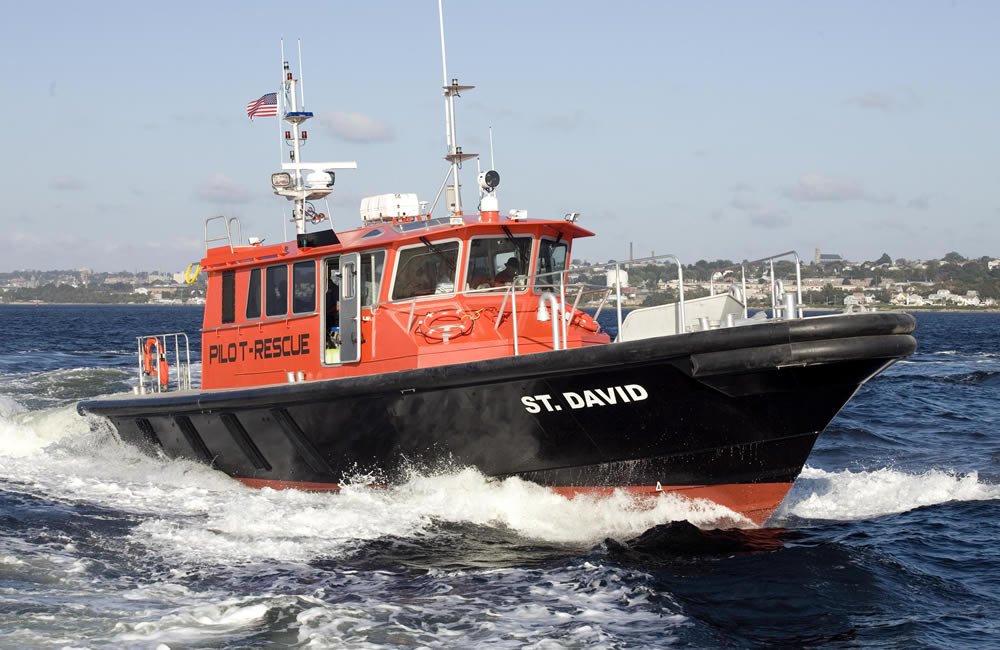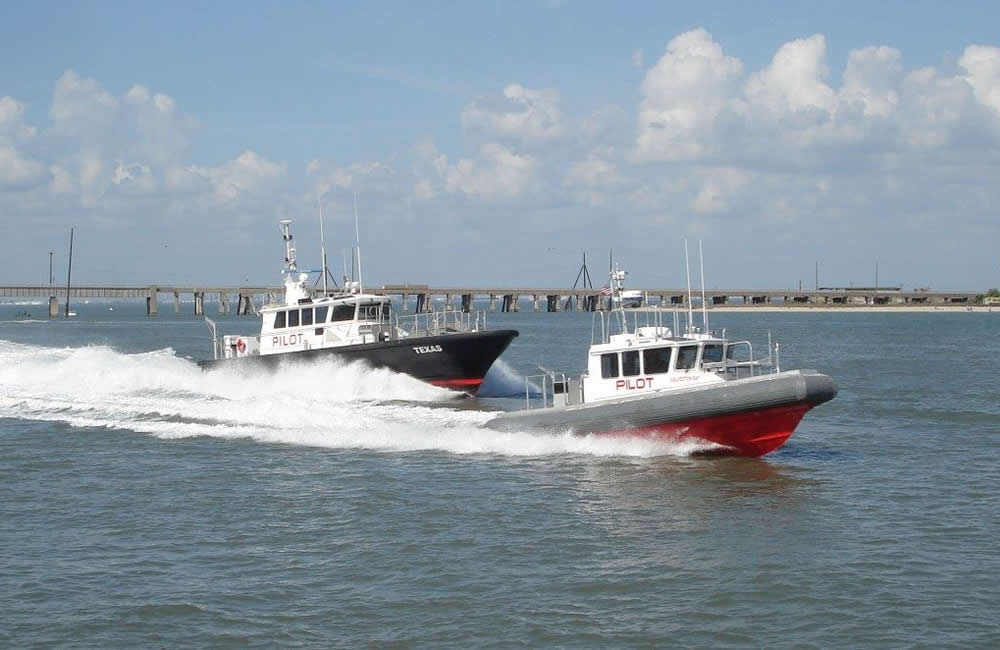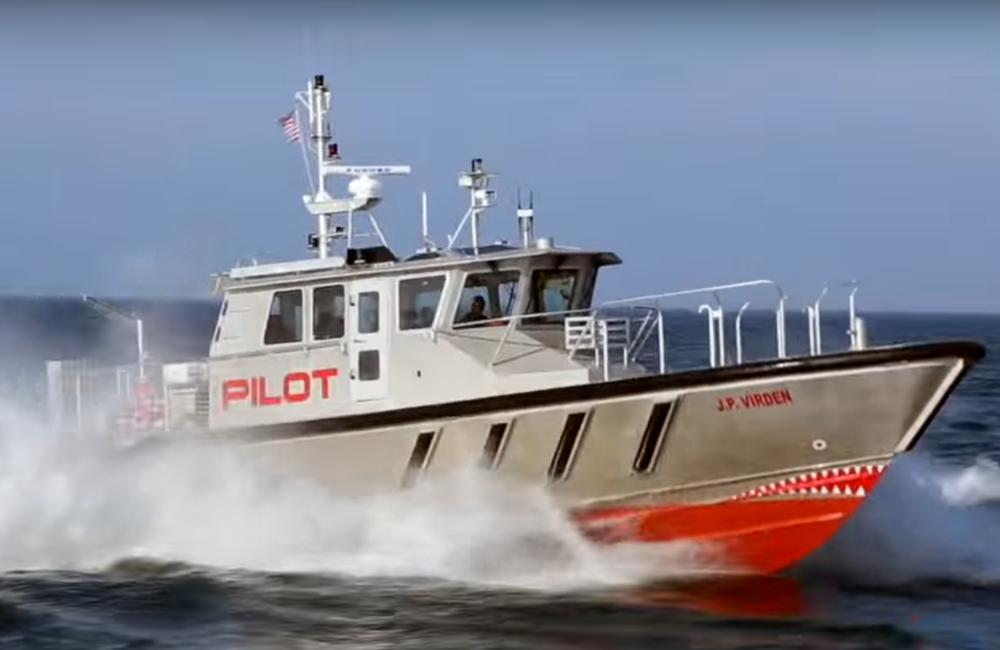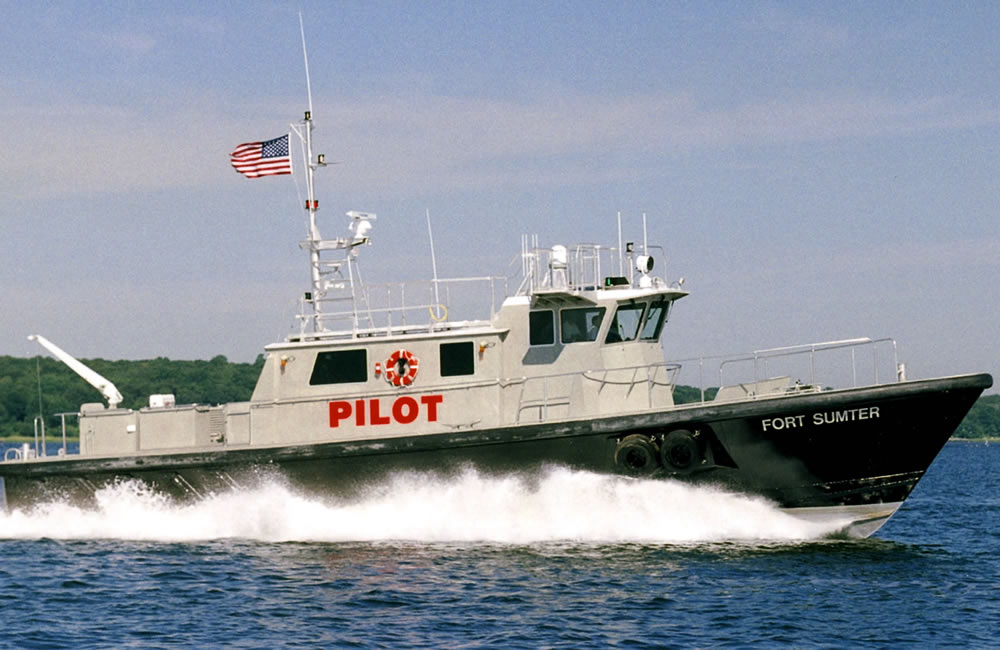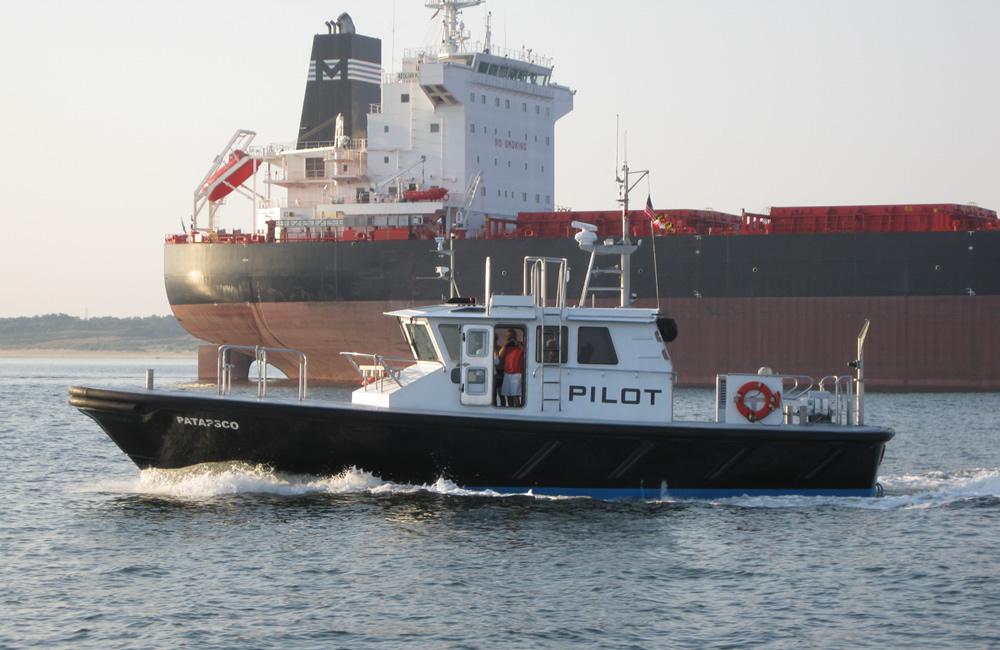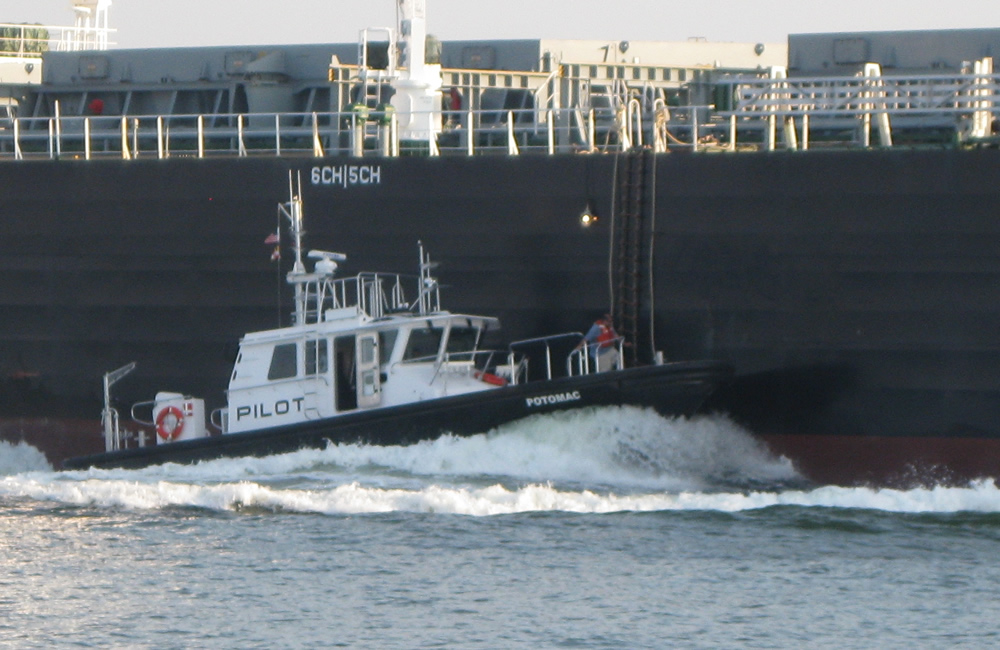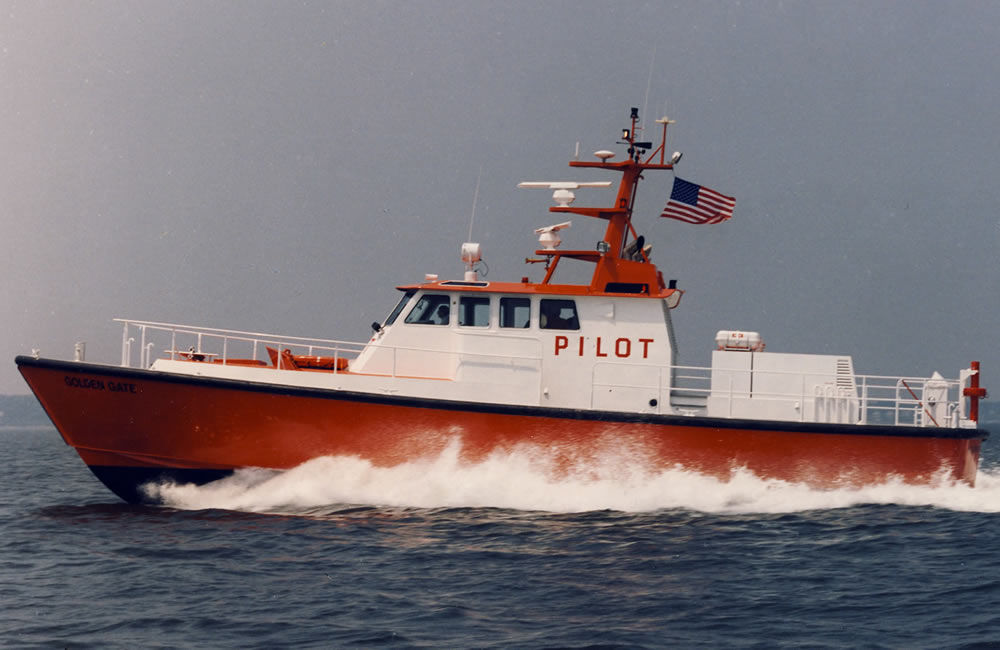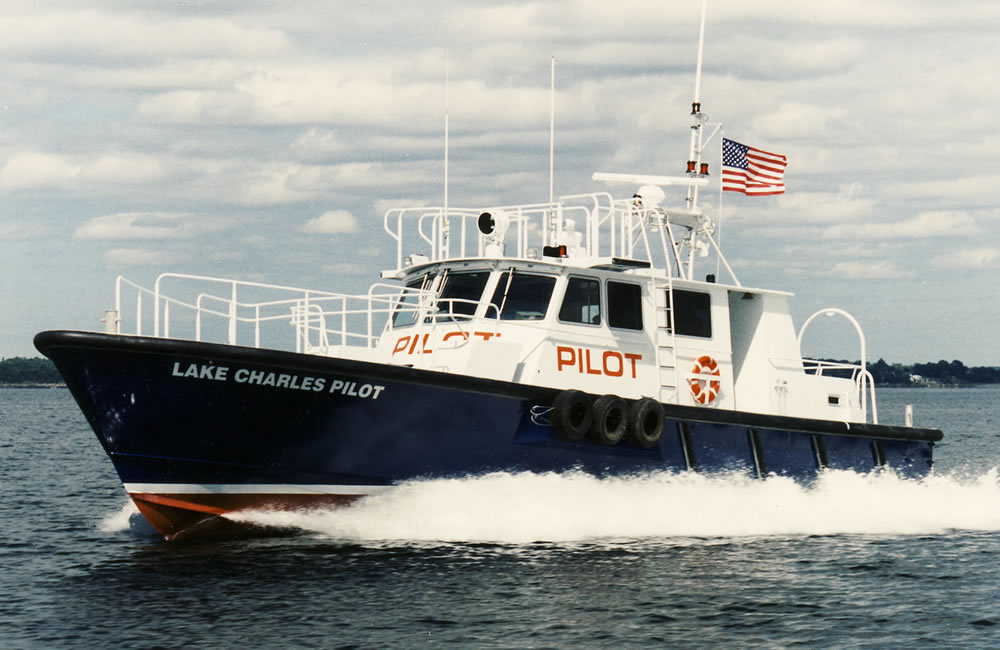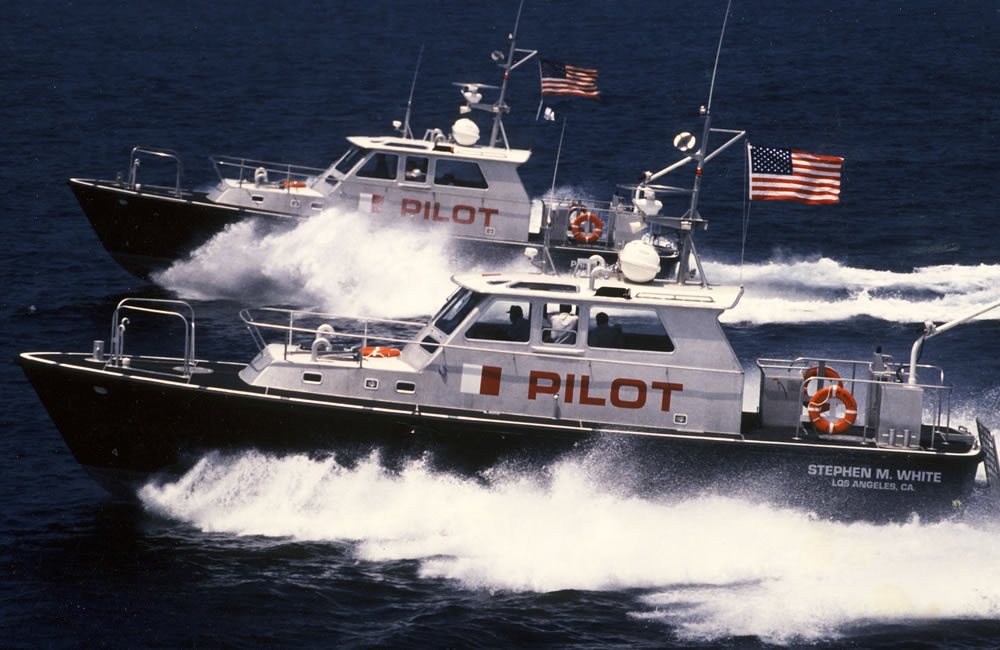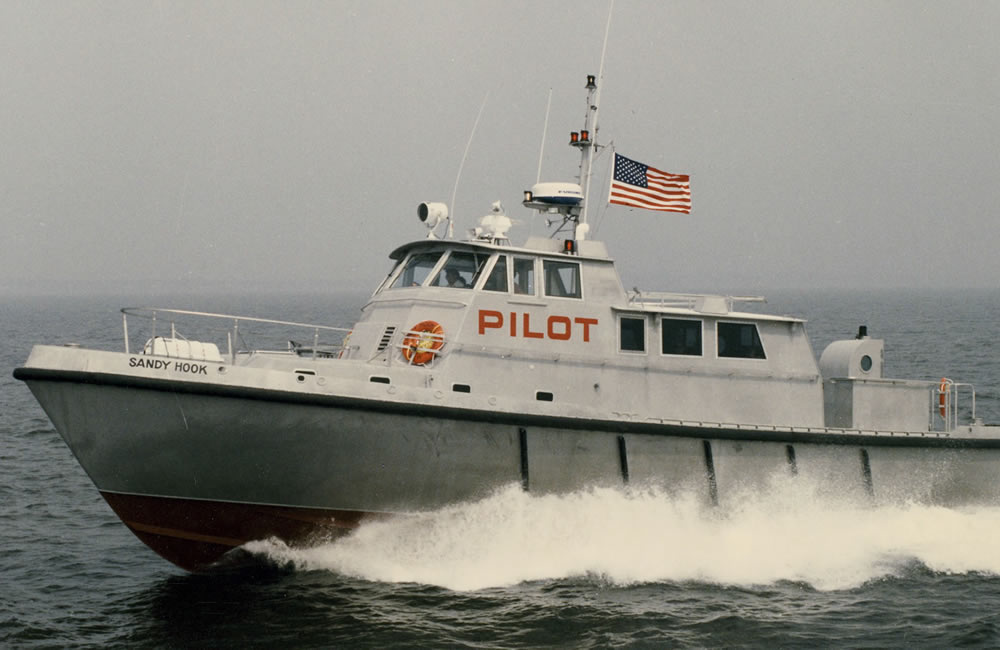Pilot Boats
Pilots face a unique challenge. They must transfer from a small boat to a ship via a rope ladder. The boats which take them to ships need to function in the worst weather, take rough treatment and still go fast enough to deliver pilots to bridge decks in an economical amount of time and be rock steady alongside. Pilot service has changed over the past 20 years, with deeper draft ships requiring longer runs from shore-side pilot stations. Faster ships and lessened turnaround time require higher boarding speeds, sometimes 10 knots or more.
The Hunt deep-V hull is a proven rough-weather performer, with a high dead-rise bottom, spray deflecting strips and chine, flat and flared topsides. This shape works well at planing speeds in head seas and following seas, minimizes roll in cross seas and retains good control at displacement speeds in gale conditions. The Hunt deep-V hull is not only a proven rough weather performer, but also performs well when boarding, remaining stable when in contact with a ship, with no tendency to become stuck alongside.
Over the years, the sophistication of interior accommodations has also changed. Pilots now sit in state-of-the-art seats, fully adjustable for comfort and support. Noise levels are controlled better and pilot safety increased with wide side decks, heated handrails and rescue systems. Designs take into account the unique requirements and preferences of each pilot organization.
The Pilot Boats designed by Ray Hunt Design are grouped into the following Classes. Each Class refers to a group of boats that use a common hull design with varying profiles and layouts. Each Class is named for the first boat built to that design.
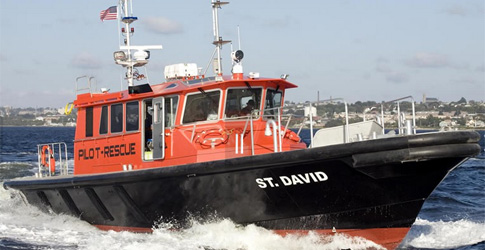
61ft Search & Rescue/Pilot Boat
St. David was designed and built to strict Lloyds Register Rules for the Bermuda Dept. of Marine and Port Services. She serves a dual role as Bermuda's primary Pilot boat and as its offshore Search and Rescue boat. St. David launched in October 2011.
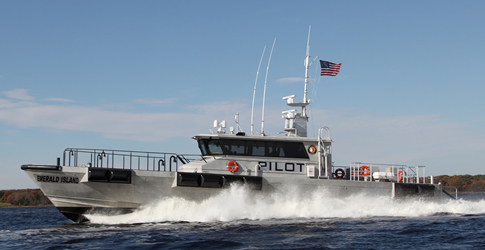
Alaska Class
A 75-foot aluminum waterjet pilot boat based on the proven Texas class but designed with heating systems and equipment to operate safely in the cold Alaska waters.
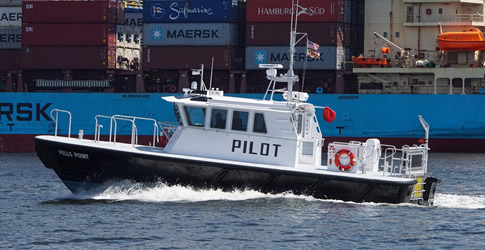
Baltimore Class
The Baltimore Class design was developed as a smaller version of the popular Chesapeake Class. It is about 20% lighter with less overall length, beam and draft requiring 15-20% less power to achieve the same performance. Initial and life cycle costs are less, also.
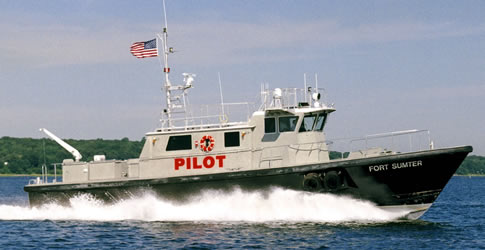
Charleston Class
A 75-foot twin screw pilot boat was developed to be capable of standing offshore for hours at a time and providing full accomodations for pilots and crew. Two boats were built for the Charleston Pilots and a third was delivered to the Lake Charles Pilots.
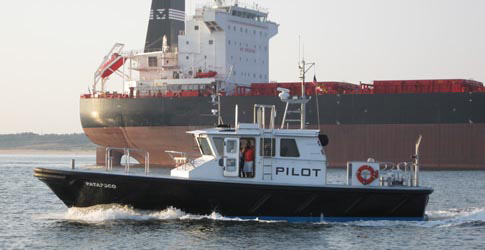
Chesapeake Class
A 53-foot aluminum pilot boat developed for the Maryland and Virginia Pilot organizations as an enhancement of the St. John's Class design with increased sheer height, beam, and topsides flair for severe offshore service. Twenty boats have been built since this class's inception in 2001. The most popular size and type among U.S. pilot groups.
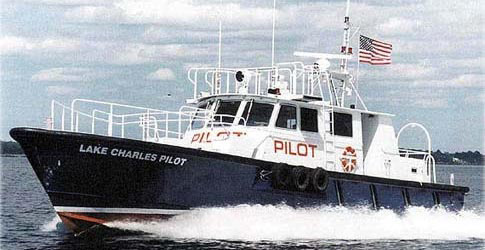
Gulf Class
A 63-foot twin screw pilot boat developed to meet the need for a larger, more seakindly boat for those pilots who needed to go further offshore or remain out on station for short periods of time. Three boats ranging from 63' to 67' have been built with varying layouts and profiles.
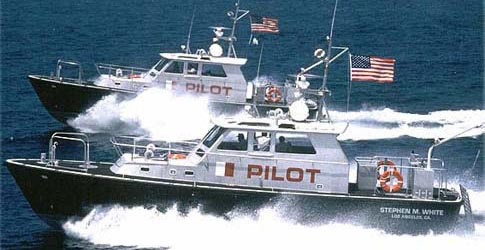
Los Angeles Class
A 52-foot pilot launch developed for the Los Angeles Pilots. These boats were built with moulded FRP hulls and aluminum deckhouses. Two boats have been built to this design thus far.

Resilient Class
A 43-foot aluminum waterjet driven RIB developed to address the need for a small, maneuverable, shallow draft boat for in shore use. Collar options of foam, hybrid foam and air, or air collar are available. Outboard propulsion is a new option.
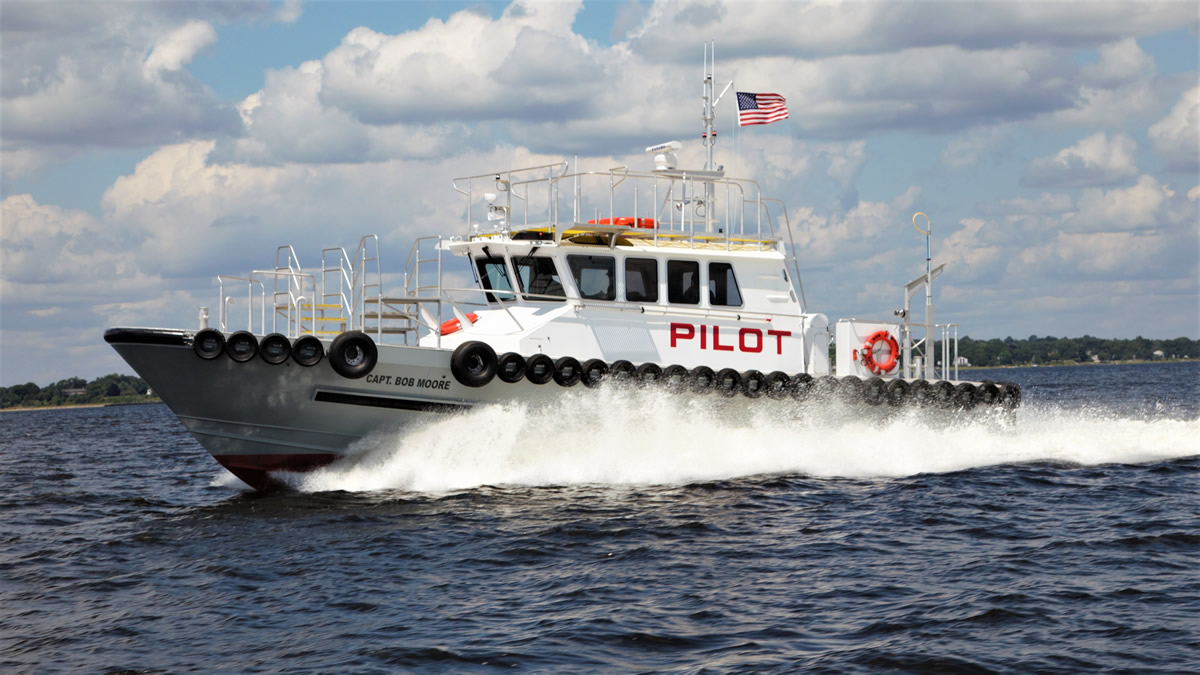
St. John's Class
A 53-foot aluminum pilot launch developed for the St. John's River Pilots based on the highly successful 50-foot Delaware and 51-foot Virginia pilot boats. Ten boats have been built thus far.
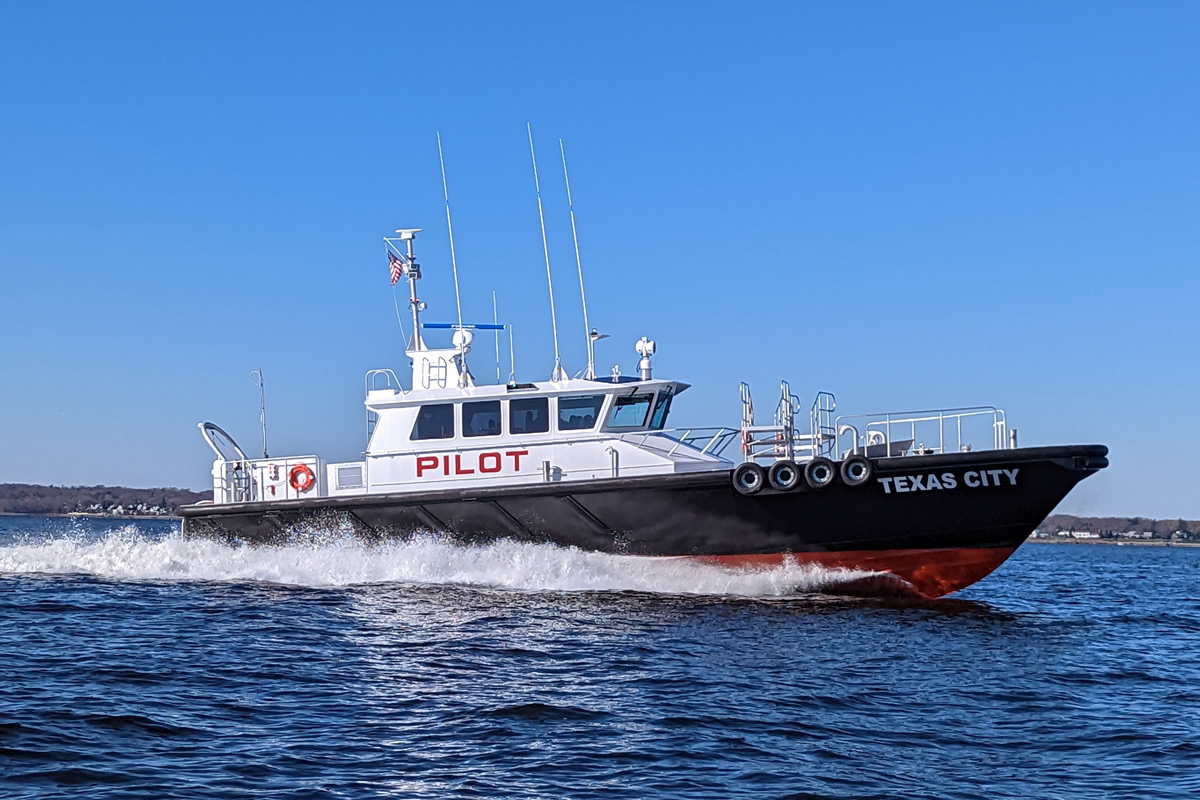
Texas Class
A 70-foot waterjet propelled boat developed for the Galveston Texas Pilots to satisfy the need for a larger, safe, fast and maneuverable boat that would be capable of higher speeds even when further offshore. A second boat was built in 2010. A third boat was delivered in late 2022 with IPS pod propulsion.

